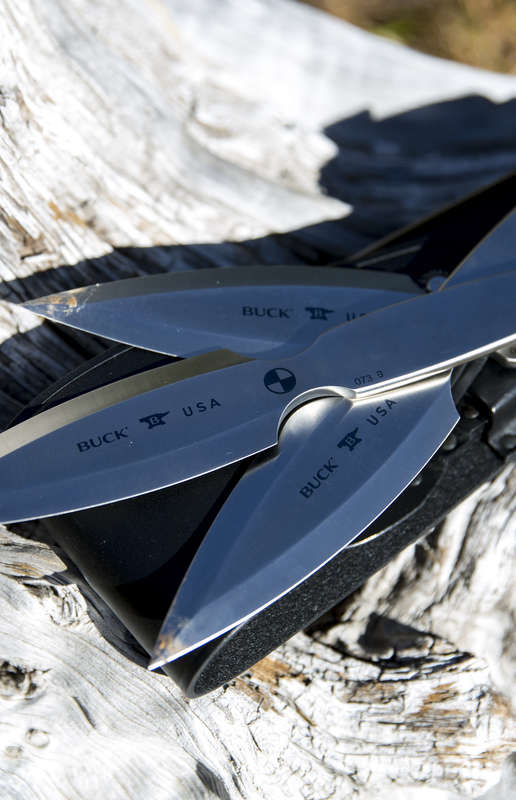Choosing the Right Knife

Fixed Blades vs. Folding Knives
One of the basic decisions in selecting a knife is choosing between a fixed blade and a folding knife.
- Fixed blades are stationary and stored in a sheath. They are durable and easy to clean but can be difficult to transport and conceal.
- Folded knives are easier to carry but the folding mechanisms can be tricky to keep clean.
Choosing one or the other is a matter of both personal preference and practical need.
Fixed Blades
Fixed blades are a single piece of metal, often with a tang or full-tang element – a tapering of the blade into the handle. Full-tang knives have “slabs” attached to both sides of the blade to form a handle. Full-tang fixed blades are easier to maintain and sturdier than folding knives, making them the knife of choice for dressing game and camping. However, transporting even the smallest fixed blade knife in an urban environment can present a challenge.
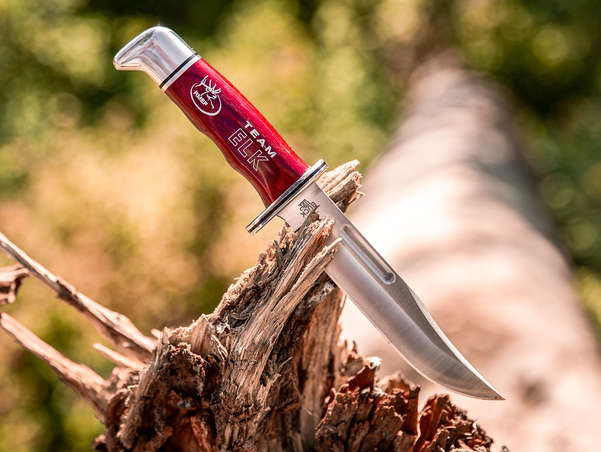
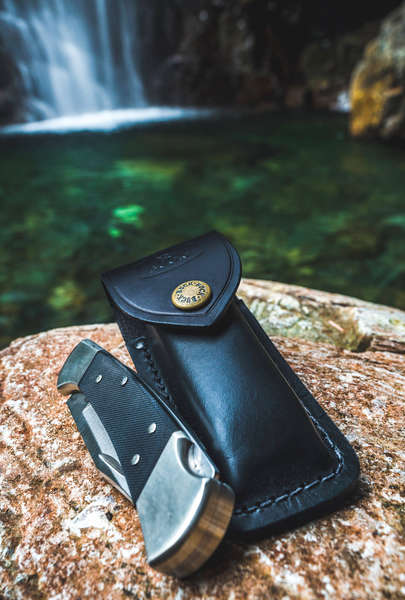
Folding Knives
Folding knives are smaller than fixed blade knives. Folding knives with locking mechanisms can be safer to carry and are much easier to transport on your person or in a back or knapsack. Folding knives can also be more versatile than fixed blade knives. There are several different locking mechanisms for folding knives.
Locks the knife blade in the open position. Closing Lockback knives requires two hands, although some can be opened with one hand.
Opens via a tensioned mechanism inside the handle. Liner locks are typically opened and closed with one hand.
Similar to liner locks but with a channeled lock mechanism on the side of the knife. Also opened and closed with one hand.
Operated by a button mechanism near the front of the handle. Button lock knives may involve either one-handed or two-handed opening or closure.
Also known as a strap lock, SLS knives use a strap along the spine of the knife as a lock bar. This is one of the strongest locking mechanisms on the market. SLS knives require two hands to open and close.
With assisted opening knives, a mechanism takes over after a user initiates opening the knife, with a safety lock to prevent accidental opening, and typically opens and closes with one hand.
Handles & Steels
Copper & Clad offers different variations of the handles and steels traditionally offered by Buck. We want you to find the right handle and steel to have the knife that works perfectly for your lifestyle. Understanding how you intend to use your knife can help you choose the steel with the optimal balance between corrosion resistance, edge retention, and sharpening ability to obtain optimal performance and durability.
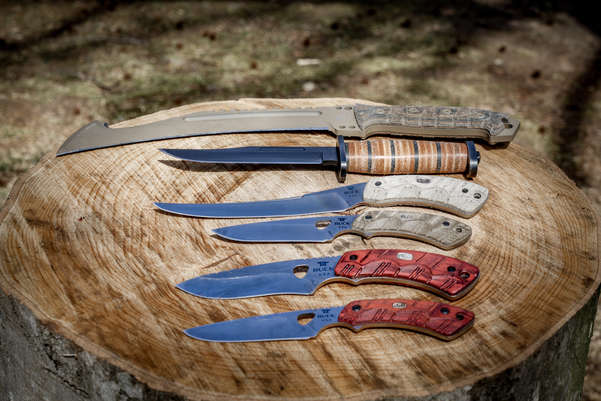
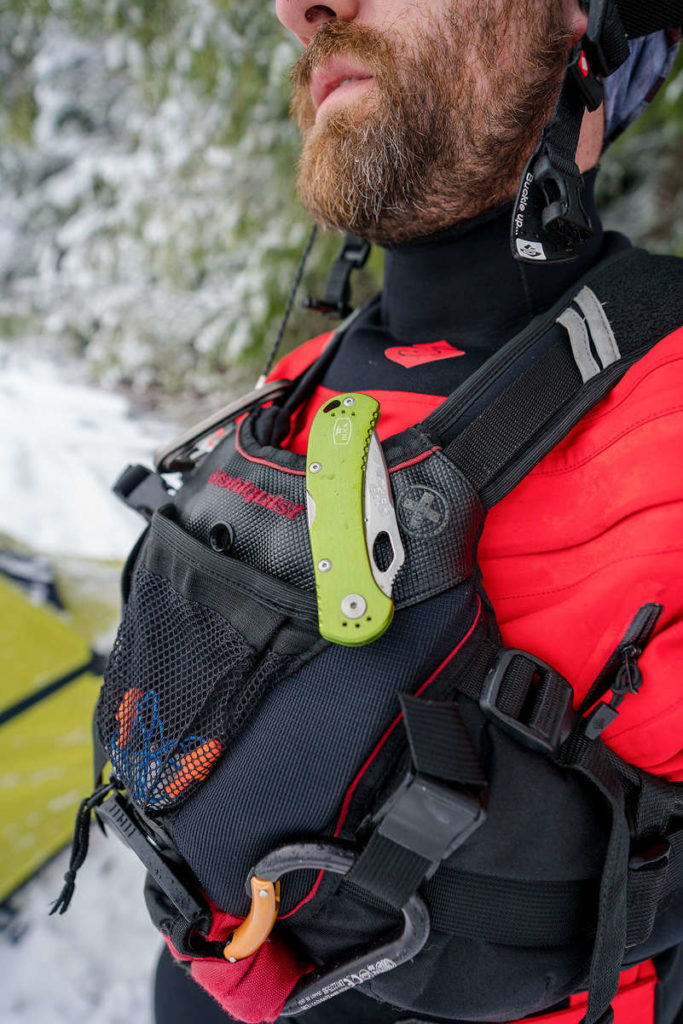
Handles
- Sambar Stag
- Elk Stag
- Buffalo Horn
- Micarta
- G-10
- Camel Bone
- Lucite
- Carbon Fiber
- Genuine Ebony
- Oak Dymondwood
- Charcoal Dymondwood
- Rosewood Dymondwood
- Blue Indigo Dymondwood
- Cherry Dymondwood
- Cocobolo Dymondwood
Steels
Also known as spring steel, 5160 Carbon Steel is Copper & Clad’s top selling Steel. This steel has excellent shock absorbing qualities that make it resistant to shattering and extremely durable. Buck hardens 5160 Carbon Steel to a Rockwell hardness of Rc 57-58 for enhanced performance. While all Carbon Steels will patina over time if not kept dry and lightly oiled, many of our customers choose to force a patina on their 5160 blades to give their knife a one of a kind look.
This is the standard steel for Buck’s knives because it combines the wear resistance of carbon alloys with the corrosion resistance of stainless steel and is easy to re-sharpen. Thanks to Buck’s exclusive heat-treat process, this steel also has superior corrosion resistance. Buck hardens this steel to a Rockwell hardness of RC 58 for enhanced performance.
This advanced steel contains high amounts of carbon along with chromium, molybdenum, and vanadium, which gives it excellent corrosion resistance, incredible edge retention, and high ductility. This double-tempered steel can be hardened to a Rockwell hardness of Rc 59.5-61. The only downside is that it is difficult to re-sharpen yourself.
With excellent edge retention and corrosion resistance, this steel is ideal for heavy-duty cutting jobs. Buck hardens this steel to Rc 59-61 for best performance.
